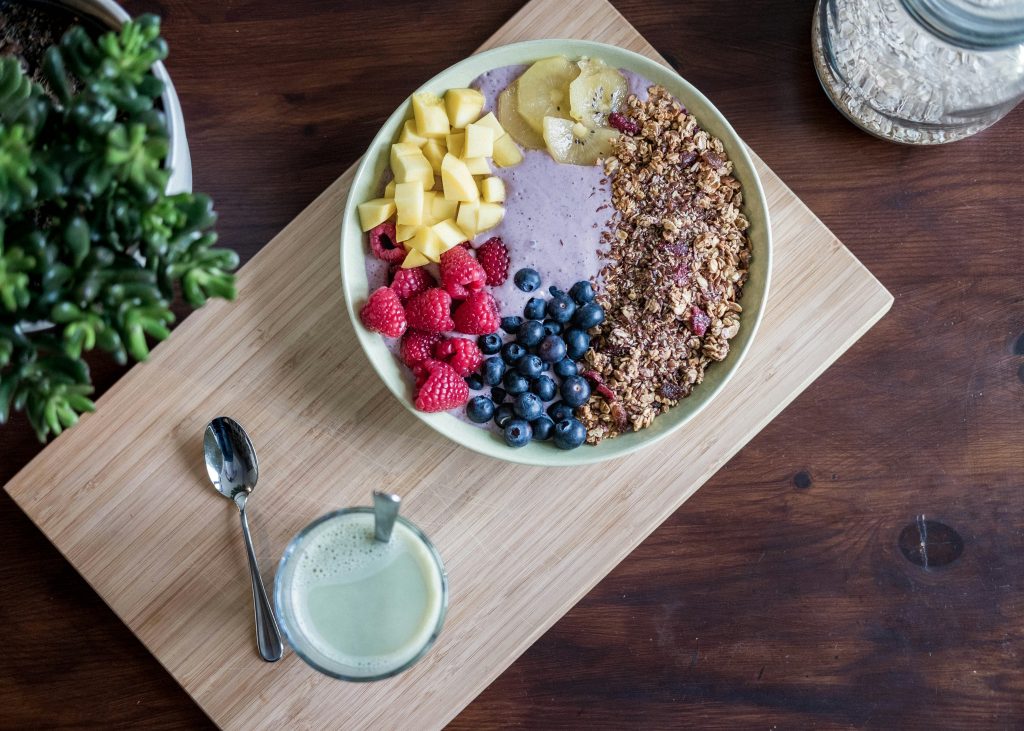Your gut is a living ecosystem of trillions of microbes—often called your gut flora or microbiome. When this community is diverse and balanced, it supports digestion, immunity, energy, and even mood through the gut–brain connection. Below, we’ll show you how to nourish a healthy gut with foods, smart supplements, and everyday habits.
Probiotics: The “Good” Bacteria

Probiotics are live, beneficial bacteria that reinforce your gut lining, aid nutrient absorption, and help regulate immune function.
Food sources: yogurt with live & active cultures, kefir, sauerkraut, kimchi, miso, tempeh, natto, and kombucha.
Supplement tip: choose a multi-strain product (e.g., Lactobacillus and Bifidobacterium species). Rotate brands a few times per year to encourage diversity.
Prebiotics: The Food Your Microbes Love
Prebiotics are specific fibers that your good bacteria ferment to produce short-chain fatty acids that calm inflammation and support the gut lining. These cultivate a healthy gut.
- Garlic, onions, leeks, asparagus
- Bananas (slightly green), apples, berries
- Oats, barley, flaxseed
- Chicory root, Jerusalem artichokes
Daily Habits That Support a Healthy Gut
- Eat variety: aim for 30+ different plant foods per week to feed diverse microbes.
- Include one fermented food daily.
- Move your body: regular activity improves microbial diversity.
- Prioritize sleep: 7–9 hours supports circadian gut repair.
- Manage stress: breathing drills, mindfulness, or DNS can protect the gut-brain axis.
- Limit disruptors: unnecessary antibiotics/antacids, ultra-processed foods, excess alcohol, smoking.
Quick Start Routine:
- Begin the day with warm water and lemon.
- Add one fermented food to a meal (yogurt, kefir, kimchi, or sauerkraut).
- Build a colorful plate: different plants = different fibers.
- Walk 10–20 minutes after meals to aid digestion.
Ready to Personalize Your Gut Health?
At Life in Motion Chiropractic, we take a whole-person approach to digestive and musculoskeletal health. If you’re in or near Livonia, we’d love to help you create a simple, sustainable plan.
Selected References
- Sonnenburg & Bäckhed (Nature, 2016) – Diet–microbiota interactions and metabolism.
- Cryan et al. (Physiological Reviews, 2019) – The Microbiota–Gut–Brain Axis.
- Gibson et al. (Nutrients, 2017) – Prebiotics: concept & definition.
- Sanders et al. (Nat Rev Gastroenterol Hepatol, 2019) – Probiotics & prebiotics in health.
Explore our health blog or browse our services.
Healthy Gut FAQs
Do I need both probiotics and prebiotics?
They work best together. Probiotics add helpful bacteria; prebiotics feed them so they can thrive.
How long until I notice changes?
Many people feel improvements in 2–4 weeks with consistent habits, though timelines vary.
What if yogurt upsets my stomach?
Try kefir (often better tolerated), lactose-free yogurt, or non-dairy fermented foods like kimchi, sauerkraut, miso, and tempeh.
Are all probiotic supplements the same?
No. Look for multi-strain formulas from reputable brands, stored properly, with precise CFU counts and best-by dates.

